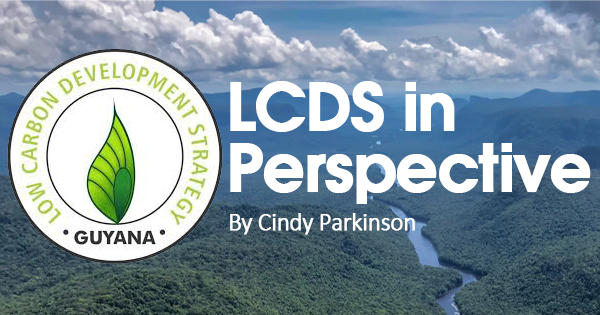NEAL Millar, the programme coordinator of the South Rupununi Conservation Society (SRCS), expressed gratitude to President Dr. Mohamed Irfaan Ali and Vice President Dr. Bharrat Jagdeo in an interview with the Guyana Chronicle.
Millar commended their unwavering support in utilising the LCDS funds to bring positive changes to the lives of Guyana’s indigenous people.
Millar expressed his satisfaction in knowing that the next generation of Indigenous people in the South, Central, and North Rupununi won’t have to face the same hardships as their parents did before President Ali and Vice President Jagdeo assumed office.

Millar explained, “It is important to remember that the indigenous people have lived according to their traditional lifestyle and a certain way of life compared to the rest of the people on the coastlands. We also know that across the world there is globalisation and modernisation that is happening, and it has reached these communities.”
Regarding the importance of the LCDS funds and the enrichment of indigenous lives, Millar further explained that he is grateful to President Ali and Dr. Bharrat Jagdeo for their tireless efforts in making sure that these indigenous communities feel inclusive, stable, and in balance with respect to development and their way of life when compared to the rest of the nation and the world.
“As Vice President Jagdeo would have said at one of his meetings, the communities could spend the money however they saw best, as long as the village puts a plan in place first. With that, I believe that the funds that were given and the freedom to spend them on their development have encouraged them to do more for their people and the community,” Millar added.

Millar expressed his satisfaction at witnessing the extensive and ongoing development across all the Rupununi communities. In his statement, he affirmed, “I can attest to having witnessed the benefits that people would have obtained from the LCDS funds.” Yes, the Indigenous people were receiving presidential grants for about 1.5 million Guyana dollars, but there was only so much that they would have been able to do with that.
Nevertheless, the significant amount of funds they receive from LCDS enables the communities to develop in a manner that can be advantageous to their population.
Additionally, Millar asserted that the LCDS has not solely contributed to infrastructural progress, but has also fostered stronger community cohesion, thereby improving the quality of life for its residents. “It is very interesting to see how the people have come together through a democratic process, decided on the use of the money in their communities, and got the young people involved.”
Among the numerous aspects that garnered admiration, the natural environment of Karaudarnau village (located in the Deep South Rupununi) stood out. The notion originated from the primary school pupils as a component of their project.
Millar asserts that this initiative has brought about favourable outcomes for the residents of the community, while also serving as a notable attraction for both local and international tourists. According to him, “This nature park would not have been possible without the young people and the LCDS funds. Now that it has been established, it is one of the must-sees for tourists, which in the near future can bring in funds to contribute to the development of the community.”

Acknowledging that communities like Aishalton have historically been considered tourist destinations, the residents have been hindered from making investments. This lack of funding has prevented the community from reaching its full developmental potential, as stated by the speaker.
“The community of Aishalton has always been seen as a tourist destination, but the people could have never afforded to highlight it the way that they would have wanted to. However, I am happy to say that the villagers have come together and invested in the development of their village with the money that was given to them. I must also say that organisations such as the Guyana Tourism Authority (GTA) have visited Rupununi to build their capacity, which will create jobs for the residents so that they too can have a steady income,” Millar added.
LCDS BENEFITS FUTURE GENERATIONS
With reference to the village’s sustainability objectives and their implications for future generations, Millar related that the community-based initiatives established today have laid the groundwork for the future prospects of the youth.
He added, “Almost every community has a sustainability plan that they are working with to establish the plans for every community. Sticking to the plan and continuing the vision across village councils is especially important, especially with the shared, democratic approach towards getting their mission accomplished.
“The young people are the future; these decisions that are made will affect them, and I am happy that the visions are made with them in mind. With these developments, the future is brighter for our indigenous people.
(This is part of a weekly series on LCDS.) The author can be contacted at [email protected])



